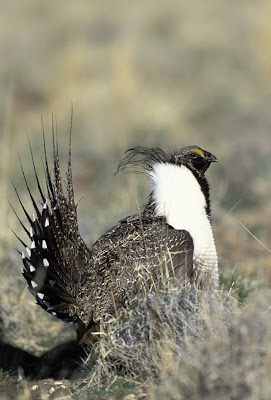The U.S. Fish & Wildlife Service will give almost $4 million in grants to conservation projects in the United States, Canada, Latin America and the Caribbean. Those funds will be matched by almost $18 million from conservation partners to research, monitor and manage migratory bird populations and to educate the public.
The
Neotropical Migratory Bird Conservation Act of 2000 says at least 75 percent of a matching grants program must go to projects in Latin America, the Caribbean and Canada. Only 25 percent can go to projects in the United States, such as:
Arkansas -- Almost $29,000 will go to
Arkansas State University to study tower collisions.
Maine -- $100,000 will go to
National Audubon Society to manage and restore tern nesting habitat.
Michigan -- Nearly $15,000 will go to
Michigan State University to study wind turbines' effects on songbirds in forests.
Among the international projects that will receive grants are:
Gulf Coast of United States, Mexico and Honduras -- Almost $136,000 will go to
Gulf Coast Bird Observatory to purchase island stopover habitat and to monitor species.
Colorado and Mexico -- More than $168,000 will go to
Rocky Mountain Bird Observatory to buy grassland habitat and to monitor grassland species.
United States, Canada and Mexico -- More than $83,000 will go to
Hawk Migration Association of North America to create one central database for raptor data.
To learn more, click
here.
Labels: conservation
 Do you amble along a trail while listening to and looking for/at birds? Then you might enjoy participating in National Trails Day on the first Saturday of June.
Do you amble along a trail while listening to and looking for/at birds? Then you might enjoy participating in National Trails Day on the first Saturday of June.














